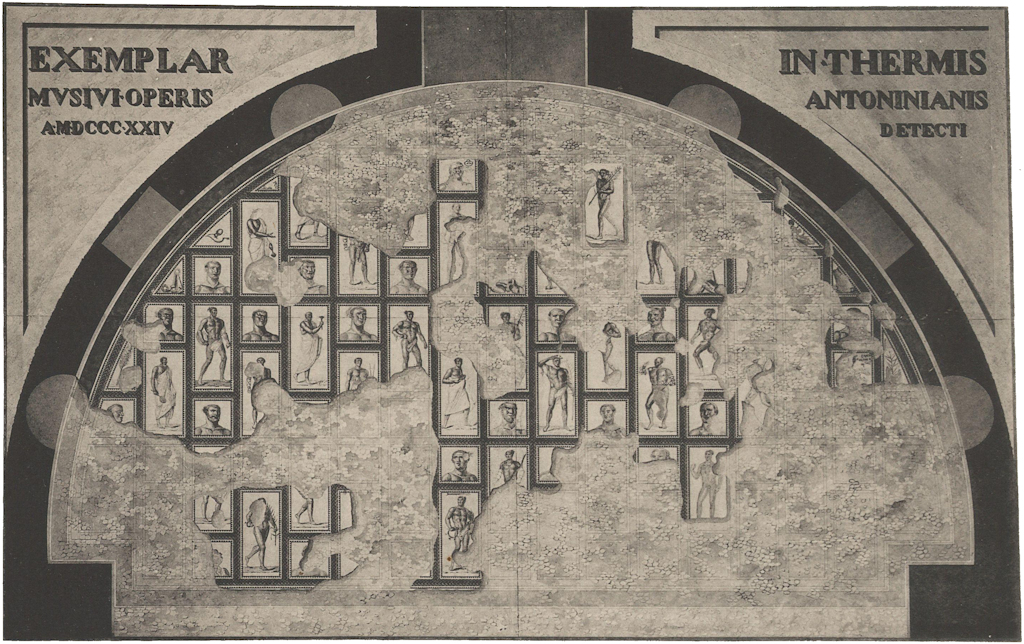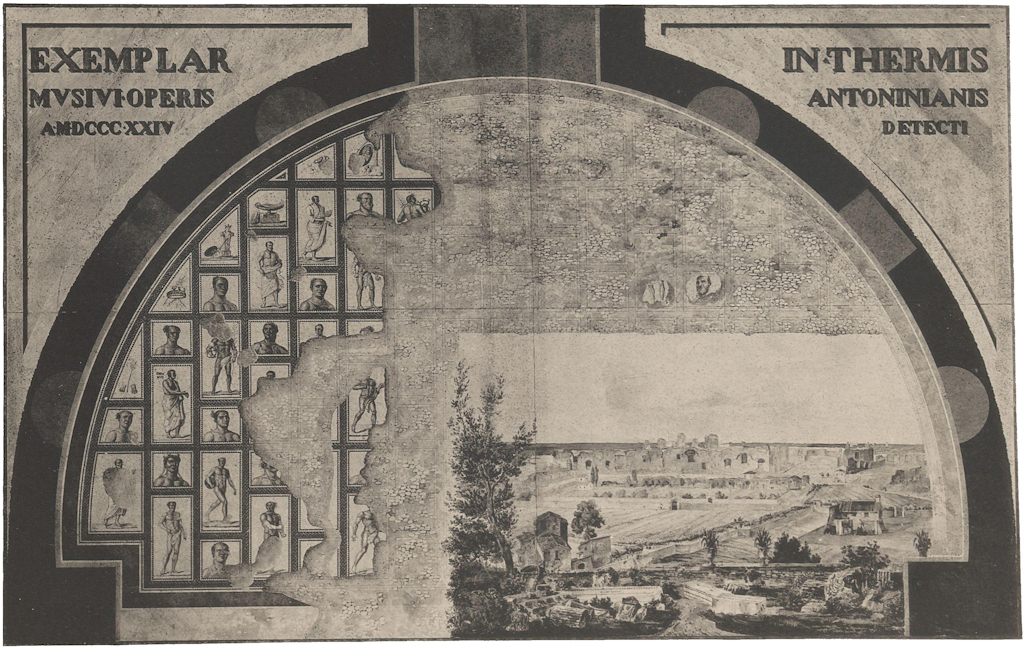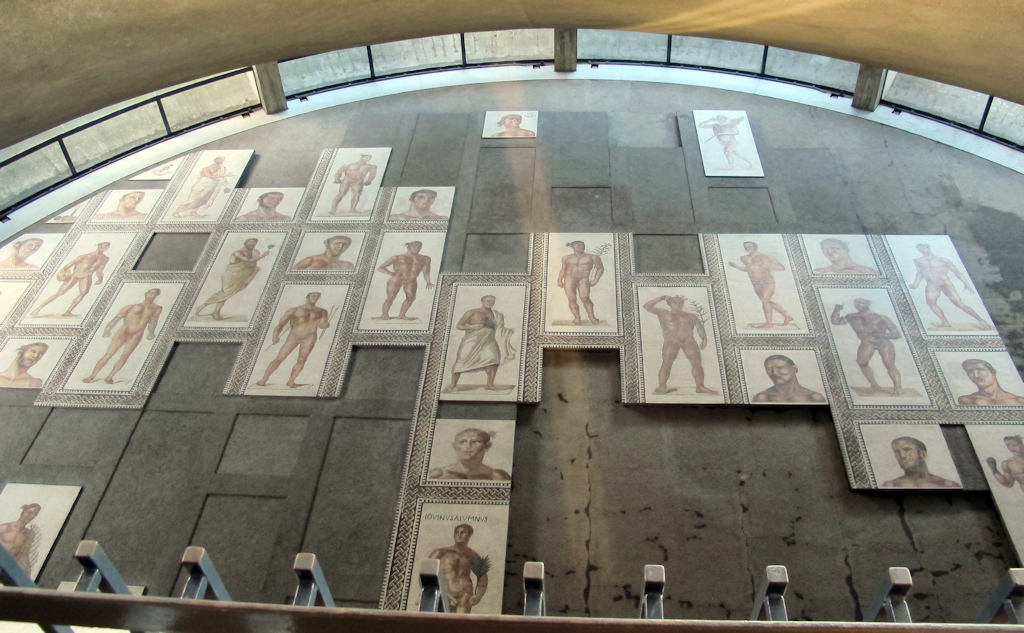Faces of the athletes from a Roman mosaic that was found in the Baths of Caracalla in Rome in 1824
Two famous polychrome mosaics with athletes and judges were discovered in the baths in 1824. Today they can be seen in the Vatican Museums. They were restored considerably in the 19th century.
The mosaics decorated the floors of the two large, semicircular apses F of palaestras G. The apses are 24 meters wide and 14 deep. Each apse contained 101 isolated depictions, each in its own frame. The athletes are discus throwers, javelin throwers, wrestlers, boxers, and winners holding a palm branch and wreath. Each athlete is depicted as a distinct individual, some are accompanied by their name (Iovinus, Iovianus, Venator). Most of the judges have a beard.
Some scholars have assigned a date in the fourth century, others in the Severan period. Antonio Insalaco makes a strong case for a date during the reign of Alexander Severus, perhaps around 225 AD.
Click on the image to enlarge. Mosaic with athletes from the baths as found.
Vatican Museums. Image: Nogara 1910, Tav. IV.
Click on the image to enlarge. Mosaic with athletes from the baths as found.
Vatican Museums. Image: Nogara 1910, Tav. IV.
Click on the image to enlarge. Mosaic with athletes from the baths.
Vatican Museums. Photo: Wikimedia, Sailko.
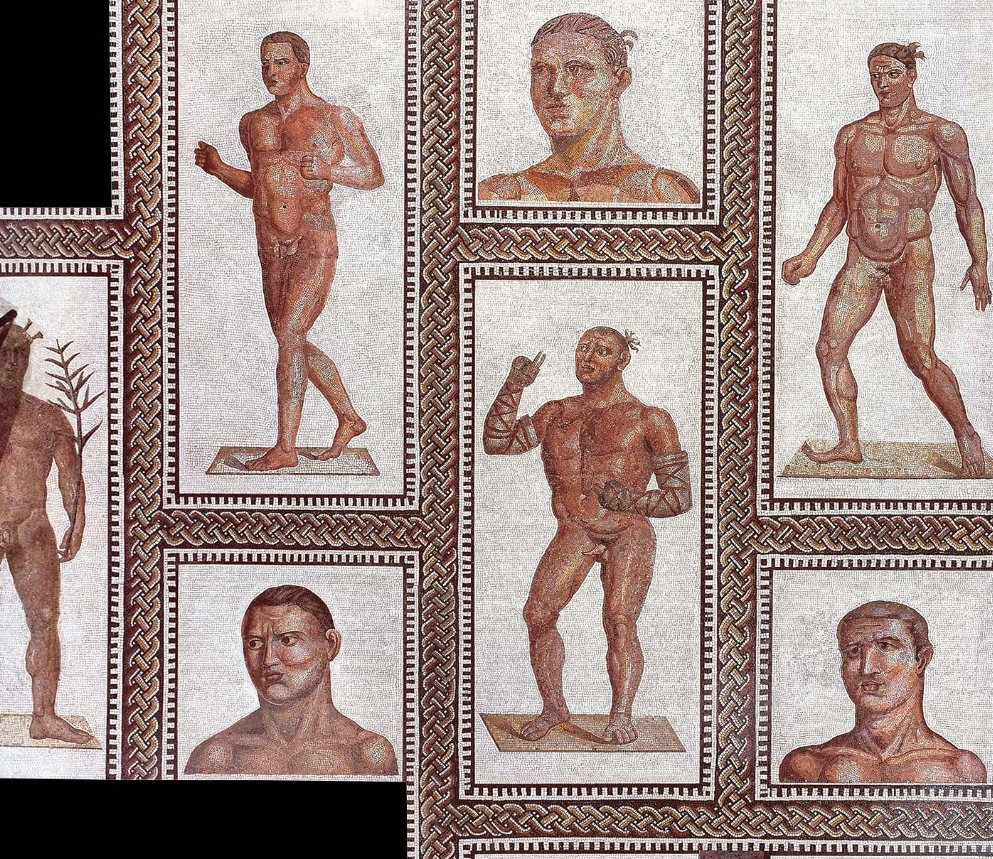
Mosaic with athletes from the baths, detail.
Photo: Vatican Museums.
MOSAICS IN SITU
Several polychrome and black-and-white mosaics can still be seen in the baths. Most have geometric motifs, fragments have been preserved of a marine thiasus. They have all been assigned to the Severan period.
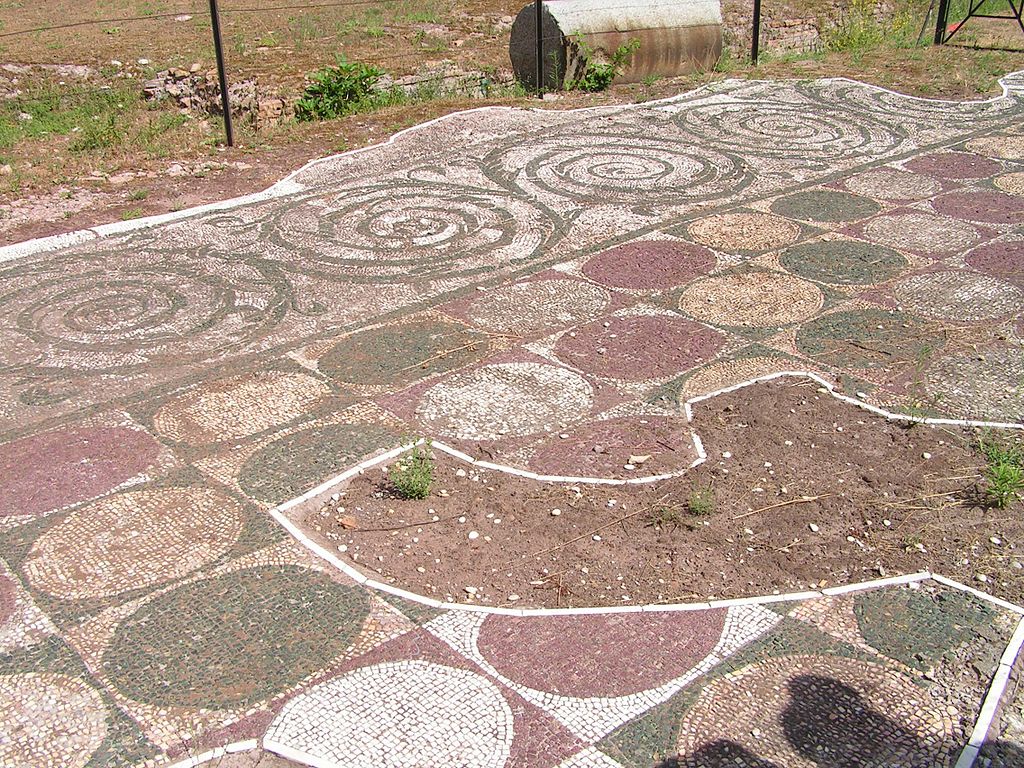
Photo: Wikimedia, Harmonia Amanda.

Photo: Wikimedia, Gzen92.
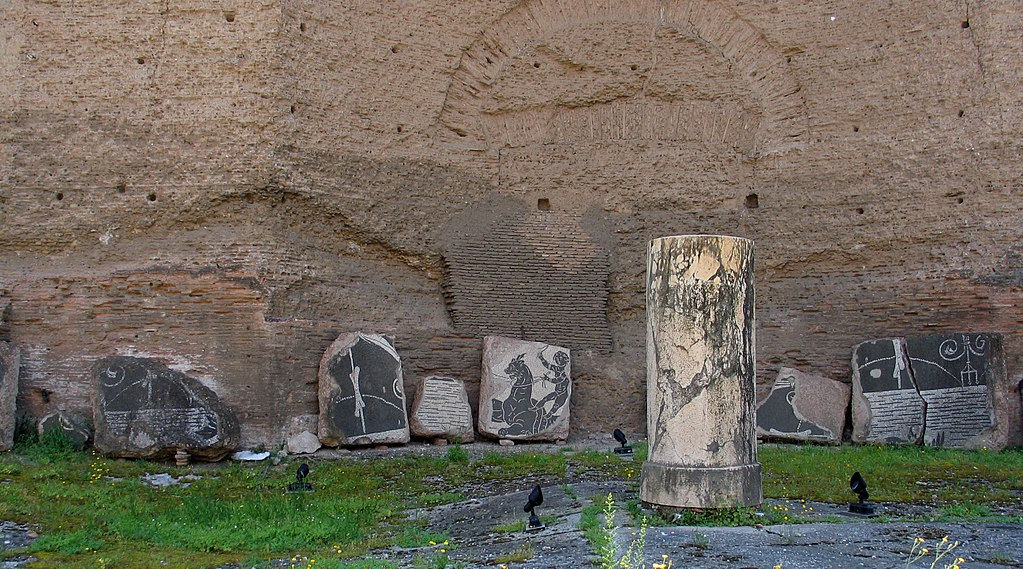
Photo: Wikimedia, Sally V.
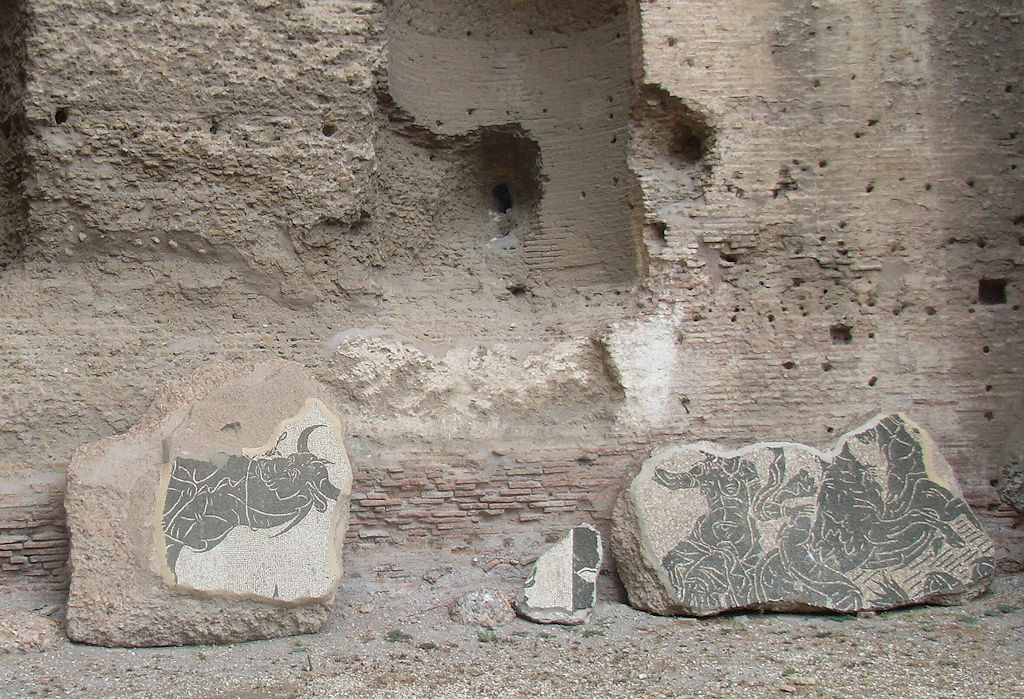
Photo: Wikimedia, Notafly.
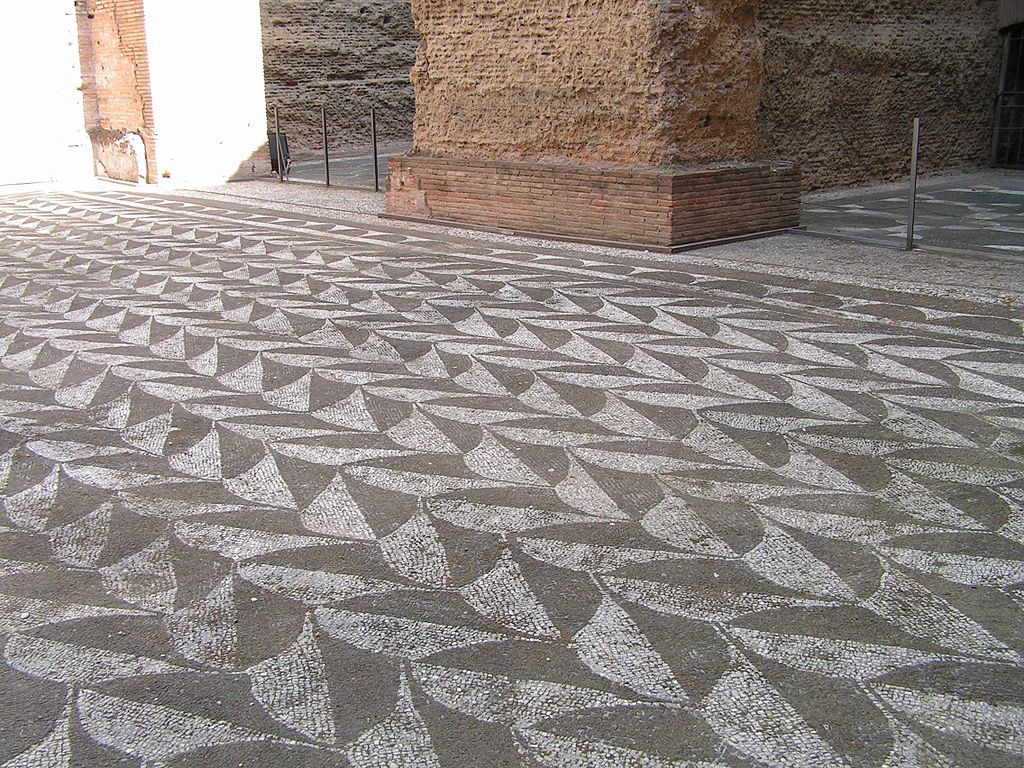
Photo: Wikimedia, Harmonia Amanda.

Related Post
A shocking documentary proves that mermaids do exist
SHOCKING Revelation: Thuya, Mother of Queen Tiye, Was the Grandmother of Akhenaten and Tutankhamun—What Ancient Egyptian Secrets Did She Leave Behind?
Breaking News: Astonishing Discoveries at Karahan Tepe Confirm an Extraterrestrial Civilization is Hiding on Earth, and NO ONE Knows!
Breaking News: Researchers FINALLY Discover U.S. Navy Flight 19 After 75 Years Lost in the Bermuda Triangle!
NASA’s Secret Investigation: Uncovering the Astonishing Mystery of the UFO Crash on the Mountain!
Explosive UFO Docs LEAKED: Startling Proof That Aliens Ruled Ancient Egypt!
